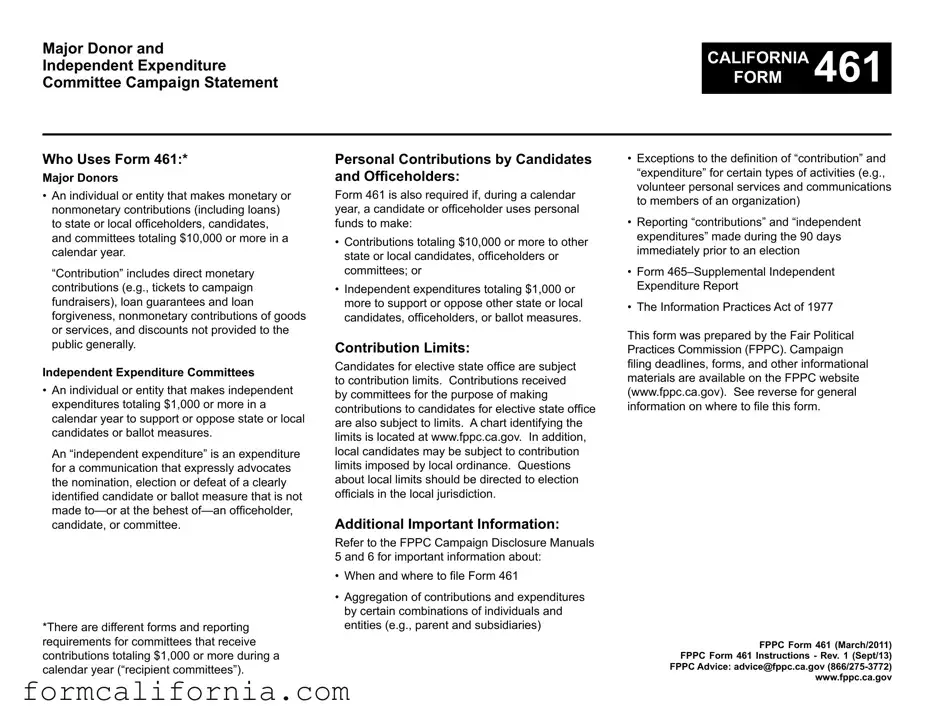The California Form 461 shares similarities with a range of documents important in the political and campaign finance context. One such document is the Schedule A of Form 460, used for reporting detailed contributions to a campaign. Both forms require detailed information about the donor, the amount contributed, and the recipient, ensuring transparency in campaign financing. While Form 461 is specifically for major donors and independent expenditure committees, Schedule A of Form 460 is utilized by recipient committees to itemize contributions received, marking a complementary role in the broader campaign finance reporting ecosystem.
The IRS Form 527 is another document with a common purpose, designed for political organizations to report their contributions and expenditures. Although it serves a federal reporting requirement and Form 461 is state-specific, both documents play crucial roles in promoting transparency within political financing. They require detailed information about contributions and expenditures, helping to keep the electoral process open and accountable.
Another related document is the Federal Election Commission (FEC) Form 3X used by political committees to report receipts and disbursements. Like California's Form 461, FEC Form 3X is critical for revealing the financial activities of entities involved in political campaigns. Although they cater to different jurisdictions—federal for FEC Form 3X and state for Form 461—their function in ensuring transparency in political funding binds them closely together.
Form 700 is California's Statement of Economic Interests, a declaration for public officials to disclose their assets and income that may be affected by their official duties. While it focuses on potential conflicts of interest rather than campaign finance, the ethos of transparency and accountability is a thread that connects it with Form 461. Both forms are tools designed to prevent corruption and promote trust in the political process by providing clear records of financial interests and activities.
The California Form 497, also known as the 24-Hour Contribution Report, is necessitated for reporting large contributions close to an election. The immediacy and significance of these disclosures align with the spirit of Form 461, although targeting a different aspect of campaign finance. The quick reporting turnaround time for Form 497 emphasizes the critical nature of transparency in the final stages of an electoral campaign, complementing the annual or semi-annual disclosure rhythm of Form 461.
The "Statement of Organization" (Form 410) required for political committees in California to officially declare their intention to raise funds is another related document. While Form 410 deals with the establishment of a committee, Form 461 deals with the reporting of its activities, illustrating different stages in the lifecycle of political and campaign finance activities. Both are essential for a comprehensive understanding of campaign finance structure and flow.
The Lobbying Disclosure Act (LDA) Reports, mandated at the federal level, bear resemblance in their goal of promoting transparency, this time in the realm of lobbying activities. Though not directly related to campaign contributions like Form 461, LDA reports and Form 461 share a commonality in their aim to illuminate the financial interactions between politics and external interests.
Lastly, the Form 450, or the Short Form of California's Statement of Economic Interests, caters to certain public officials with less significant financial dealings. While it's narrower in scope compared to Form 461, both forms underscore the importance of disclosing financial information to uphold integrity and trust in public office and the political process.






